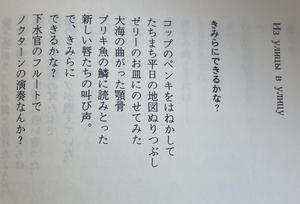2/17/18
Photographer’s position—what does it articulate? Seems “solitary,” to reinforce world/subject dualism. No way out of that—as Nakahira shows conclusively. He's the end Provoke isn’t the end of modern photography—Documentary is. But what kind of “collective” subject could a photographer bring into being? What kind of subjectivity can be articulated?
“For the Constructivists, the question of their role and efficacy has tremendous urgency, given that the essentially bourgeois conception of the artist with which they came of age—the artist defined as an individual committed to the expression of self—is now under extraordinary pressure.” p 8
Founder of 中ピ連 (full name = 中絶禁止法に反対しピル解禁を要求する女性解放連合).
Kirino Natsuo has written a novel about her life. From movement leader to new religion
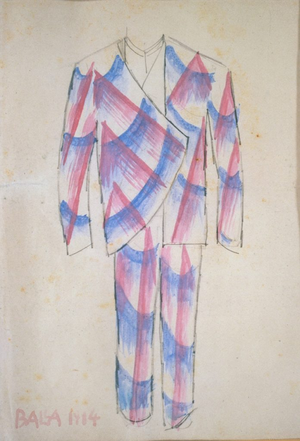
Teaching Italian Futurism to students in Osaka.
C remarks: “Gorgeous! Just wish they weren’t such assholes lol.”
Footnote I cut: The tradition of Chinese inkbrush painting offers the convention of a landscape depicted in a vertical orientation.
Passed by one of my favorite paintings today in Ohara, on display in the little market where various local farmers sell their stuff. Art into life, truly!
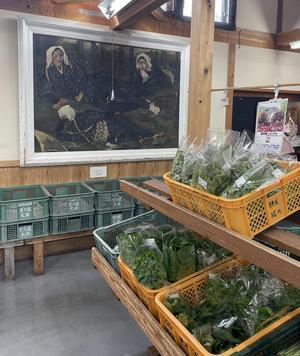
野田嘉一郎『大原女』1936年
Noda Kaichiro (I think, it could also be Yoshiichiro), Ohara Women 1936
Karl Löwith’s ideas sound so much like Nakahira’s. Check out these quotes (glosses in an article by Flavia Baldari):
In his discussion of the idea of progress, Löwith focuses his criticism on the modern scientific spirit and the anthropocentric standpoint that consid- ers the world an object for humans to manipulate for their own profit. 118
Löwith affirms that our way of being in the world is, in reality, just one more aspect of the world-human relationship. Modern science with its thirst for invention, progress, and advancement concentrates its efforts only on the practical utility of nature, downgrading the world to a mere human world. 120
Whether it is vehicular or not, a language that does not risk the disturbances arising from contact among cultures, and not ardently involved in the reflections generated by an equal relation with other languages, seems to me doomed to real impoverishment.
[…]
There is one thing we can be sure of: a lingua franca (humanistic French, Anglo-American sabir, or Esperanto code) is always apoetical. 112
Some connection here to the paper I wrote years ago on late Nakahira, about prose poetry, and so on.
[scribbled in the movie]
the faces of people watching these screens are the faces that we know today. totally vacant.
transfixed.
One of the first people to consider ikebana and photography together, I think.
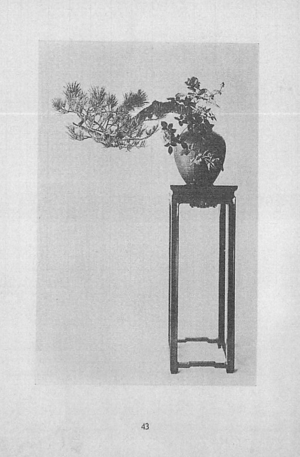
This image is a scan of a printout of a scan (from the NDL) of a 1927 book caled 新時代の插花, or The New Age of Flower Arrangement. The word Yamane uses for “flower arrangement,” 插花/sōka, is closer to a Chinese term, the dictionary says it is “literary.”
I guess Some Japanese Flowers by Ogawa Kazumasa is an even earlier precursor, although it is less obviously about ikebana.
These days, my eyes more or less glaze over when I see Barthes cited. He has become a shorthand for “photography theory” which I think is very unfortunate.
Ohata wrote this article about Chikada Yoichi 近田洋一, the journalist who I know from his articles about the Matsunaga Yu incident. CHikada was invited to Chikuho 筑豊 in 1969 October because of the 「おきなわを考える会」.
Chikada later moved to Saitama, and worked with a group of disability activists protesting for better access to train stations. He wrote a book based on a series of columns he wrote on this in 1985. 220–last page.
Chikada finds a very interesting similariry of relation between able-bodied / disabled people and mainland / Okinawa. He overlaps the two (this is from his text called 私がみた本土のなかの<沖縄>):
そこから周囲を見渡すと、<沖縄>はいたるところにあった。学校に、崩壊していく農村に、管理社会のなかに。つまり、本土のなかにさまざまなかたちである非人間性の総体が<沖縄>だった。
I spent probably far too long moving this blog over to GitHub, so now I can update it smoothly, straight from Terminal actually. I finished that work over a month ago, after tearing my hair out trying to figure out how to get images to work properly, and then of course I haven’t written anything since, even though that would not be at all obvious because for the moment I am not displaying any dates on these posts. I like the idea that they do not need to add up to some sort of “consistent” flow of content—these little notes are meant to be “crumbs” I am leaving for myself so that I can be reminded, later on, of things that came to me while reading or taking notes on the fly, often on my phone, which I’m happy to post more or less as-is.
Perhaps I am even “breaking” the consistency of the blog by writing down this meta-reflection on its content, when I have intended it mostly as a personal resource that I just sort of happen to make public. Lately, I realize that I do miss blogging as a form, or maybe as a practice, something about it feels very natural to me, it reinforces certain good habits and tendencies, and I like the idea of doing something in a very small corner of the internet, with no comments, no stat counters, in a very rough way, where I can string together as many clauses as I like without worrying about the repercussions. So, no dates for now, but I’ll probably add permalinks, and eventually I will have to start splitting the page up when there’s too much content here.
These reflections are heavily inspired by recent posts that my sister Becca has made on her own new blog.
By the guide of language, I mean our propensity to adopt a role, a particular tone, when we talk about those paintings, those photographs, that moved us in the first place. I suppose one could call that tone authoritative, for want of a better word, but I would be a completely unreliable narrator if I started to imitate here or anywhere, really, the language I learned in academia, or learned to imitate in the 1980s, when the goal was to be Rosalind Krauss, or Barthes, or someone other than yourself, certainly in terms of voice, a time when fracture—forced humanism—was essential in conveying the life of the text or the death of the author, I could never determine which as I read those various texts, an admixture of the personal and knowingness, resulting in an unimpeachable intellectual and thus moral rectitude that wasn’t so far removed from all those men Krauss, Barthes and others had studied with to begin with, guys who didn’t deal in the equivocal, saying painting was thus, a sculpture meant this, writing could only be that.
From an article on Lynette Yiadom-Boakye in The Believer
Should work, I think.
It took me some time to start photographing the daily ikebana installation at Hikone Station on my way to work. The sign for the electronics shop in the background was an easy device to try to keep things consistent, although I’m not trying to be too scientific.
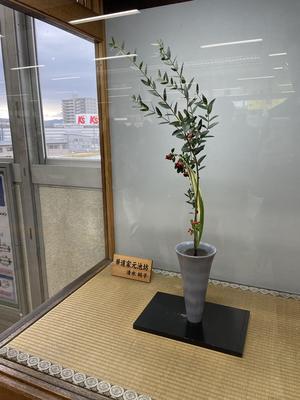
Eventually, I came to photograph it in the morning when I arrived, and in the evening on my way home.
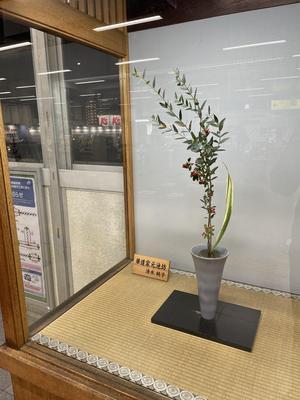
It wasn’t until much later, when I went back and looked at the photographs, that I saw how much this plant had moved.
Via Ahmed, p 12. Link to ‘positionality,’ perhaps?
Space acquires ‘‘direction’’ through how bodies inhabit it, just as bodies acquire direction in this inhabitance. Adding ‘‘orientation’’ to the picture gives a new dimension to the critique of the distinction between absolute space and relative space, also described as the distinction between location and position. As Neil Smith and Cindi Katz state: ‘‘In geographical terms, ‘location’ fixes a point in space, usually by reference to some abstract co-ordinate systems such as latitude and longitude,’’ while ‘‘ ‘Position,’ by contrast, implies location vis- à-vis other locations and incorporates a sense of perspective on other places’’ (1993: 69; see also Cresswell 1996: 156).
Just wanting to remember his name. Saw a couple of books of his at Librarie Astarte yesterday, the Zokushin essay was reproduced in one of them, a volume from 1977. He is someone else I could think about for this time… who was he? What was his overall line?
He is writing about furusato / 故郷
This is from SXXXXXXX-san, talking to him in Beppu. In his later years, Shiki was bedridden with TB, and when the technology of glass changed so that it was more flat, he was able to see the plants outside of his window more clearly. So, there is a relation between glass and media theory…
SXXXXXXX was talking about something in relation to the perpendicularity of things, that Shiki was laid out horizontally in bed, but the plants were vertical, something like that. I kind of forget, but it was interesting.
YXXX was telling me about him. Some relation to Arakawa Shusaku, possibly a relation to Lee Ufan? His wikipedia page says he was related to Taki Koji. Writing his first book in 1975… worth following up on, I think.
Debuche before the Grand Trianon 1810
“Palestinian artist Inas Halabi has namechecked landscape theory for some fascinating video artworks with a nuclear subject (Israeli waste dumps in occupied Palestine).”
Email from TXXX MXXXXXXXX
Very early movie made by Yanagi Soetsu, part of some kind of mingei thing I guess. Okinawa.
TXXX told me about it
Available in the collection of the japanese american national museum
See notes here. Whats it about ? 2024 08 06 “Tectonic Shifts in Printing, Printmaking and Graphic Design 1957-1979” @ MOMAK
Instead, upon its publication in 1999, Modern Japanese Art and the Meiji State exposed many new areas of the field that were previ- ously incapable of inclusion within the narratives of modern Japanese art because they had been structurally eliminated by bijutsu and its systems. Ikebana flower arrangement is one such example.
Foxwell’s intro to Sato Doshin, p 5
Susan Meiselas in Nicaragua, 1978 (“Arlen Siu: A Portrait”) — this image is carried through the streets! super important! it has a function for the movement
“identifying” [Levinas] — not just police ID — when you look at a face and find something there… how do you respond to a face? a connection to neuroscience here, the idea of facial communication
Isozaki Arata (p 419) is saying that perspective, surveying no longer possible. Is there a bigger push at this time against Euclidian geometry?
Note 73 The note that begins the book
Following the publication of In the Wake, many people asked me about the process of writing an academic book that speaks to and beyond the academy. More specifically, people wanted to know about the form, and also about the first chapter, “The Wake,” which begins in the register of the autobiographical with my recounting the deaths, in close succession, of three members of my immediate family between May 2013 and February 2014. It was an ethical decision to include them because while I was reading and writing and thinking about Black people being murdered and about what we make in the face of all that structural violence, I was in the midst of so much personal loss. I thought that this loss also needed to be on the page explicity, not just implicitly in the ways that, whether one admits it or not, one is oriented to one’s work from the location of the body and all that that may mean.
It is the note that begins that book.
This must be a clip only, the title says there is 10 more minutes.
Hyuga on pop art, op art, primary structures etc. An urban kind of art, she says. Perhaps I’ll find later that the more technical term should actually be “comics” (in the case of Lichtenstein) but still, a memorable turn of phrase.
Be感覚 28
The title of a show at MEM featuring Tokuko Ushioda, Shigeo Gocho, Yoshitaka Saji, Masao Sekiguchi, Kazuto Miura. Maybe apart from my essay on Otsuji, this is one of the few times that the term “straight photography” has appeared in the public sphere of photography discourse in Japan?
Includes a talk with Iizawa Kotaro, not a surprise!
I really like the way he deals with the critique of Rirkrit Tiravanija’s work in terms of being “Thai,” when in his case that category is barely meaningful. Teh is dealing very handily with the pressures of the contemporary art market and museum structure for artists to be easily identifiable by nationality, especially when they come from South or Southeast Asia.
“Can this artist—born in Buenos Aires, trained in Toronto and Chicago, transposing his New York apartment into a Gennan institution—really be communicating there only as a Thai? Does an artist’s every move carry an overriding ethical obligation to speak from or to their national polity of origin?” 8
“But as we will see Thainess—as much as any national identifier, and probably more than most—is less a biological fact than a performance, a slow and convoluted becoming.” 9
Detail of a kind of strange painting I saw in Seoul. Laughed out loud in the gallery:
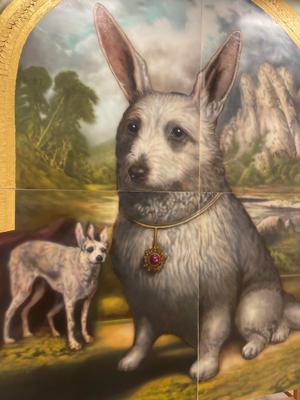
And this very nice one by Choi Gene-uk / 최진욱, the realism guy:
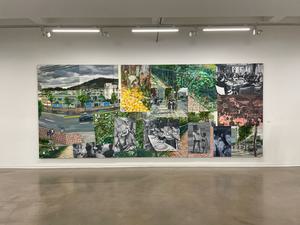
Asada Akira wrote this very nice review of the show here, includes an interesting tidbit that Sekula lined up the Kanikosen next to this right-wing manga from the 1990s called “On War” (小林よしのりの『戦争論』) which itself seems like a very interesting phenomenon.
アラン・セクラの作品は、コンセプトもプレゼンテーションも単純すぎるものの、横須賀の米海軍基地の兵士の写真と水産高校の生徒の写真を並べたり、小林よしのりの『戦争論』と小林多喜二の『蟹工船』を並べたりする正攻法の展示で愚直な批判的啓蒙に徹したところをかえって評価すべきかもしれない。
Gabriel Orozco question: he wants to know how artists on tje left were split, who went for military and imperial art, was there something like degenerate art, etc. This os a story that we do not know in English. And we do know the story in German say. I started to talk about tenko, Jelena’s book etc. Maybe there is something done in intellectual history or literature but not so much art?
A concept that Sasakubo Shin was talking about at his gig. Seemed to be about the idea that in certain indigenous cultures in brazil, when you talk about an experience of an animal, you become that animal. Felt relevant to subject object relationships, etc.
“Many critics of anthropocentricism have mistakenly perceived that the problem of our time is anthropocentricism rather than a failed praxis of being.” p 15
“I take it that any “art history” worth the name is a story of the present of past conjunctures of art (creation, consumption, criticism, infrastructure). It is therefore always a provisional genealogy of the relation between “art” and “society,” that is, the irreducible dialectic of the art form (and the immanent relations that constitute it as an object) and the social form (and the immanent relations of conflict that animate it). I take “art history” to be an endless critical revision of successive presents of past constitutions of the “art and society” relation.”
“I suppose a lot of my work in the last ten years has been exactly about how to theorize and conceptualize identity and identification which holds these two things together. I mean, the closest that I can come to it is to say that, of course, all enunciation is positioned. Without positioning, there is no meaning. You have to take up a position. If we believe in the infinite semiosis of meaning, no position is final. It’s a question of how to think the need for a positionality that is not final, what a not fully closed position is.”
From the Trajectories book p 373
two particles, photons i think? one is visible, one is not. they are called ‘entangled’ or ‘coordinated’ but i obviously like entanglement so much better. if you measure one, you know something about the other. learned this from J
Real hatake whose purpose is just to be looked at. 修学院離宮
We’re not dealing, needless to say, with a recipe or prescription. (“Painter, be as narrow-minded as Matisse …”) We’re confronting one of the paradoxes of modernity: that those who are surest they can speak to modern life almost invariably reproduce nothing but clichés about it; and that a few—a very few—of those holding modernity (rightfully) in contempt, but (wrongfully) thinking art might offer a way out of it, end up, poor devils, with the feel of the modern issuing from their brush.
In speaking to Okinawans, for instance, you would probably have to begin by marking your position as a member of Japan proper. But, as soon as you do so, you would probably have to consider another question. Is this distinction between Okinawa and Japan proper itself, not discriminatory? But, then, is it justifiable to include the Okinawans and yourself under the general category of the Japanese? I am sure more questions would arise. So, this initial marking does not confine a person to that position at all. Rather it is a step to be taken in order to realize that the position you hold is internally fragmented, far from being a stable closure, and in fact is open to multiple commitments and multiple contexts. It is necessary to mark your position in order for you not to be contained by it.
Sakai in dialogue w Stuart Hall in the Trajectories book, p 377
a thought that came to me after meeting T
Ahmed talks about the work of Sexologist Havelock Ellis, which I think has some nice resonances with Domon’s ideas of “aberration” and so on: “An aberration can refer to ‘‘the act of wandering from the usual way or normal course,’’ or even to a ‘‘deviation from truth or moral rectitude.’’ The same-sex orientation thus deviates or is off course.”
“It was only when artists recognized the site of art as socially specific that they began to oppose idealism with a materialism that was no longer phenomenologically-and thus still idealistically-grounded in matter or the body.”
Why set African photography against a Euro-American theoretical canon that we thereby reinforce when we now have the benefit of two decades of work on photography in East, Southeast, and South Asia; Australia; Latin America; and the Middle East? When do we stop treating these “other” photographies as exceptions that challenge the same old rules? This raises the question: Why “African” photography? What holds that category together? Might the Chinese photographers in Mozambique have more in common with Indonesian Chinese photographers than with Nigerians embellishing their clothes digitally? Might these latter individuals have more in common with Australian Aboriginal communities using cell phones to make ancestral connections than with colonial photographers in South Africa? What is the basis of the categories by which we divide up our scholarship and put practices into relation, and how does photography as a mobile and global technology challenge these boundary-making practices? I’m not suggesting Africa doesn’t matter as place and idea in these photographies, but when and how does it matter, and when are other connections salient?
From the discussion on Ambivalent. I have the PDF of the book now

